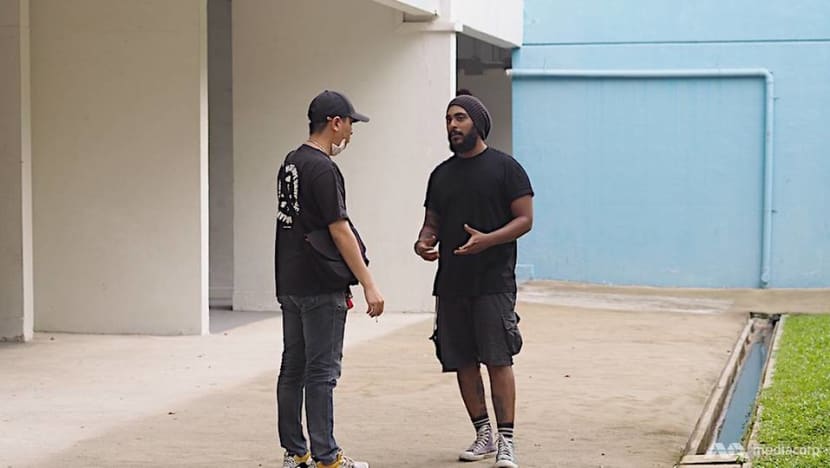To help Singapore’s youth at risk, these outreach workers must hit the streets, and fit in
Through art and music, the workers aim to get youths to express themselves and open up about their problems. But befriending them is the first challenge, which calls for some acting skills too.

Simulated street outreach that Aldrich Jai Kishen (left, on bench) can embark on at any hour of the day. (Photo: Grace Yeoh)
SINGAPORE: When one works with youths on the streets, as Teng Ziying does, the idea of what makes a safe counselling space can be quite unlike what others have in mind.
She has youths who tell her on the MRT that they engage in self-harm. “Or at a McDonald’s, they’d tell me they’re sexually active, and they’re worried that they’re pregnant,” shares the 27-year-old.
It does not matter to her where they open up, just as long as they do.
“The idea of a safe counselling space is a room which is covered, but with street outreach, you’re the safe person. You create that safety,” she says.

With youths on the streets, however, trust can be difficult to obtain.
That was why, during her job interview with Boys’ Town three years ago, her boss was afraid that she would stick out like a sore thumb and be hard pushed to befriend youths.
Her slight Western accent reflects her privileged upbringing. Her degree in applied theatre and education is a prestigious one she earned in London.
To help youths at risk, she would have to fit in with them — and so she has done together with her fellow youth workers.
Among the things they “learn from the streets” is the importance of “managing the way (they) look” in meeting the youth at their level.
“To make (the youth) feel safe, something we practise ... is to make a lot of noise before we approach. So if the youth feel like they want to hide anything, they can,” she says. Things like contraband cigarettes, she notes.
She also maintains eye contact so those who see her approaching are not defensive or guarded.
These “befriending techniques” are crucial to her job in YouthReach, a Boys’ Town programme that has worked with more than 300 youths on the streets annually for the past 10 years, through engagement and specialised intervention.
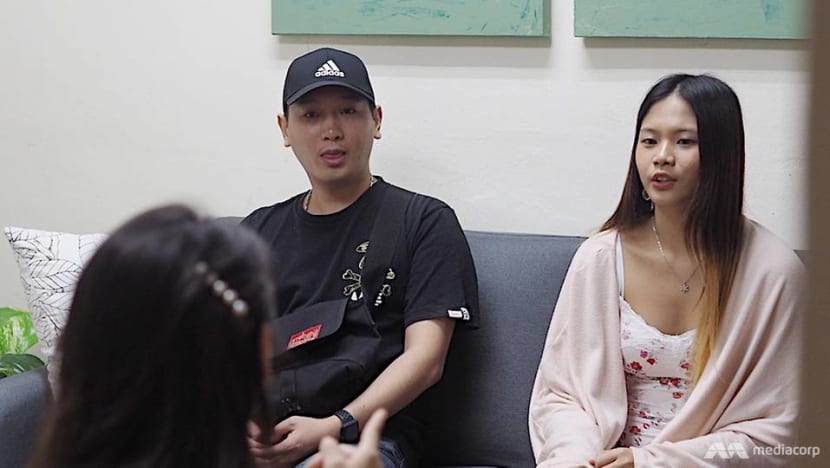
It complements the charity’s residential services, says Boys’ Town assistant director Ong Teck Chye, 38, who has been running YouthReach for six years.
“Many times I joke that the youth in YouthReach are higher-risk than my residential youth, because they’re the smarter ones who didn’t get caught (by the system),” he adds.
READ: Reintegration support for youth discharged from Boys' and Girls' Homes lengthened to one year
Teng has several arts-based interventions for them, but Ong has reminded her before not to get her hopes up, even though they are great ideas. And she understands why.
“We work with street youths who have no obligation, no school telling them that they’d go to detention if they don’t come for a session, no parents (or) no police case. They’re youths who’ve fallen through the cracks,” says Teng.
FINDING COMMON GROUND
The precarious nature of working with youths on the streets means establishing a sense of trust quickly is paramount. This is where appearance comes into play.
For instance, Teng says her fellow youth worker, Aldrich Jai Kishen, can “look very scary if he’s not smiling” because he has “all these tattoos and his beard”. So he dresses in a “youth-friendly way”, and adopts certain behaviours.
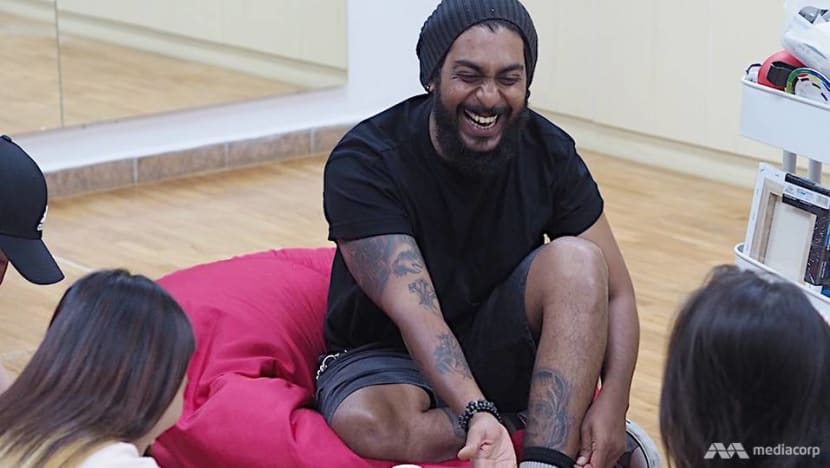
“He smiles and laughs from afar to come across as immediately comical and approachable, to be antithetical to his appearance,” cites Teng.
Jai agrees that he becomes “an exaggerated version” of himself, although his naturally extrovert character often makes youths comfortable enough to broach any topic with him, such as music.
In addition, he does not disclose his age, choosing to tell youths only that he is in his “20s to 40s” so they do not harbour a preconceived idea of him.
For Teng, the tricky task is to “pick parts of (her) personality and upbringing to put into this worker role”.
Her theatre degree has taught her a “sense of openness”, though she is well aware that she is a Chinese woman nearing 30, whereas the youth she often meets are young Malay boys.
“I’m not going to pretend I’m a Malay girl who’s 18. So I’d come across as this auntie, and I’d say, ‘Can you please let this auntie be cool and relevant? Can you please tell me what this term means? Can you tell me how to swear?’” she says.
This strategy has apparently worked: She now stores a growing list of Malay swear words in her phone.
The list first began when she got a youth to teach her what he was swearing. Once she got the hang of the pronunciation, she started using the swear words so liberally that the youth were “shell-shocked” and stopped swearing.
One of them even exclaimed, “Who teach (sic) you this word? Who? I’ll go and beat that guy.”
Playing this role lets youths know that she is not an authority figure, like a police officer or teacher. But she finds a way to make it clear that she is ultimately a youth worker, without compromising the trust and safety she wants to build.
“Sometimes I’d purposely pronounce (these swear words) in a very obviously non-Malay way, which they’d find hilarious,” she says.
Other youth lingo she has picked up include “pondok”, referring to pavilions where youths often hang out, and “sapnu puas”, which reads as “send nudes” when you invert your phone.
NOTHING WITHOUT GENUINENESS
The camouflaging and code-switching must, however, be rooted in authenticity and “interest in every part of their lives”, whether or not relevant to the help YouthReach can render.
READ: The challenges young people face in seeking mental health help
“Youths on the streets are very smart and intuitive. I don’t fake anything,” says Teng, adding that youths can generally tell when someone is putting on a front.
“Similarly, when (actors) are on stage ... and telling someone else’s story in character, you have to believe it. It’s very clear when you see one person acting, yet there are two characters on stage. You have to internalise it.”
If Teng wants to learn about someone’s family background, she would not jump straight into talking about their parents. She would focus on an object like the person’s e-scooter to delve into further conversation.
“Maybe they use it for GrabFood, and because they’re underage, they had to borrow somebody else’s ID to do it,” she says.
“That may lead to how they’re unable to focus in school because they do deliveries at night, since there’s a surcharge and they can earn more. Then I’d ask why they need so much money.”
There is a “desire to meet them where they’re at” on her part. Empathy is also key, says Jai, and it can start with “remembering that we’ve all been rebellious at one point”.
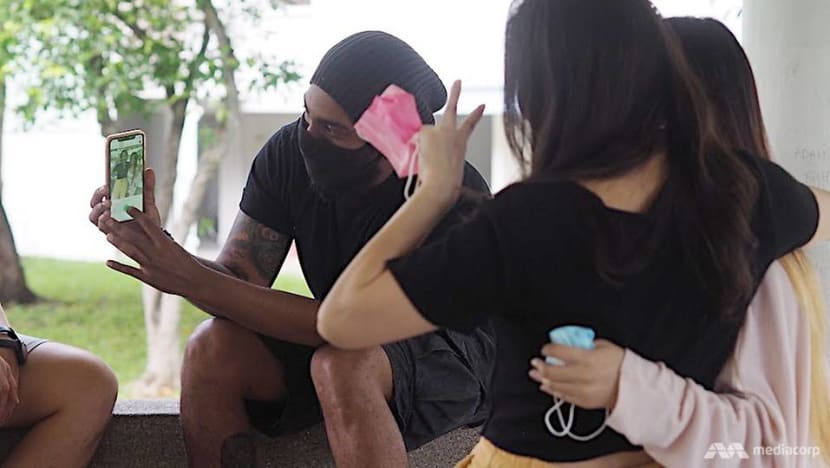
An old boy of Boys’ Town’s residential services, he remembers that no one asked him why he was angry when he was younger, so he now tries to find out the sources of youthful anger.
“We’re painting them as delinquents, but most of them are victims of circumstances. They’re not ‘at-risk’ youths,” he says.
“I see Harry Potter in real life daily — like kids trapped in broom closets — staying in really small flats, having no personal space. Yet they want to make it (in life).”
READ: Facing disrupted futures, Singapore’s youth must put their mental health first — a commentary
The youth workers’ goal is to create the space for youths to express themselves openly, although this also creates grey areas in their work.
For instance, they cannot exactly tell a 15-year-old to stop smoking or ask youths why they are not in school if they are hanging around in uniform. Adopting such a stance risks damaging trust before its seeds are sown.
“Then we’ve lost,” says Teng. “We’ve cut that contact.
“The youth can continue to smoke and not say anything, but it’s about just sitting there and engaging them. This shows them that we’re more than youth workers ... They don’t have to hide stuff from us.”
Importantly, the youth workers also maintain their street credibility by keeping youths’ stories confidential. This involves blurring youths’ faces in YouthReach photos, or obscuring any sign that they are from a gang lest the gang should find out.
It does not make for a very publicity-friendly job. “Some stories of change aren’t stuff we can publish because it would ruin our street cred. To us, the work is the priority,” says Teng.

USING ART TO CREATE A SAFE SPACE
Beyond talking to youths on the streets, Teng puts her theatre background to use by involving “accessible expressive arts” in rapport building with youths, helping them express what they can’t and changing their perceptions of art.
Armed with sheets of paper and markers, she and Jai take to distributing these materials in youth spaces to those who are curious about what they are doing.
The two youth workers make sure to demonstrate that there is no “wrong” move in art so the youth are not intimidated. They have also figured out a topic of universal interest to connect with youths: Heartbreak.
Teng recalls a boy who used cigarettes to burn holes in his paper, to represent the holes a girl left in his heart.
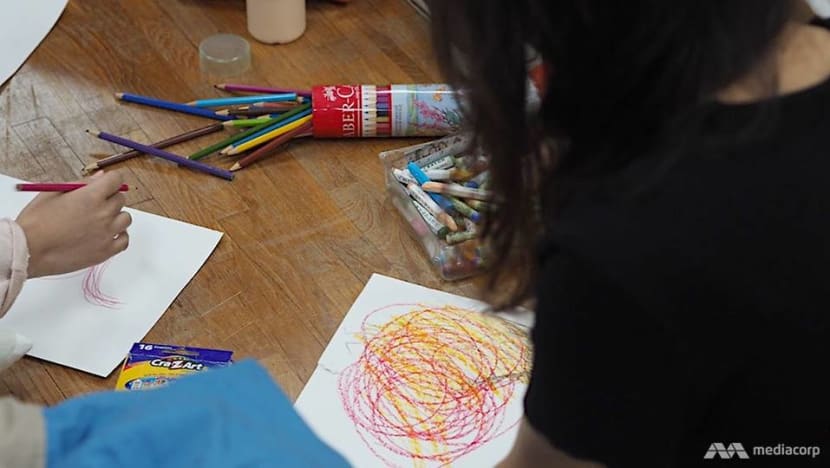
Another boy drew a heart, burned one side of it with his lighter and drew a line down the middle before skating over the heart on his skateboard, like performance art.
In one activity Jai did with Teng last year, when they brought a speaker along with art materials, they asked youths to pick a song that reminded them of love and draw freely.
When Jai noticed a gang symbol that a boy drew, the youth said he had drawn it to remember a friend who lost his life because of his gang.
Sometimes Teng and Jai get youths to come to the YouthReach centre in Tampines to talk further, with or without accessible expressive art methods.
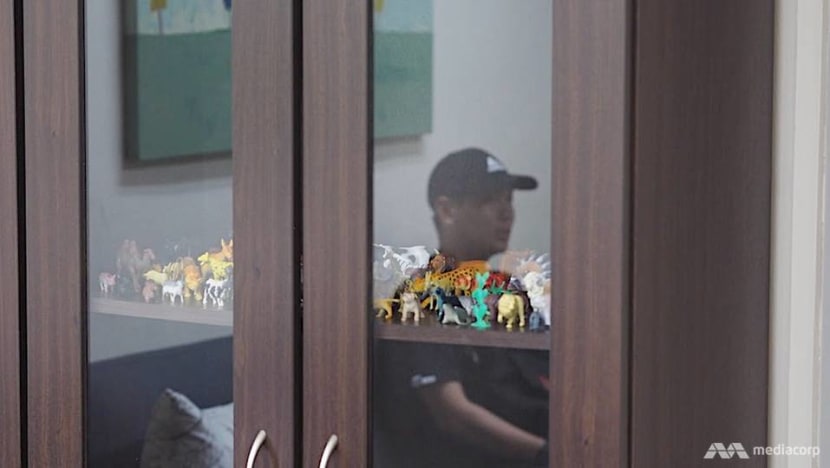
“By doing work on the streets, we’re constantly asking youths to be vulnerable. So how do we maintain the safety?” points out Teng.
Jai remembers a heavily tattooed 20-year-old who got emotional after playing with sand and toys, namely a Barbie doll and Hulk action figure.
“The Barbie was out of the box, and The Hulk was covered in sand. I asked him what that meant, and he said his girlfriend broke up with him. The Hulk was covered in sand because he felt ashamed,” recounts Jai.
“He said he was an asshole throughout the relationship, until she gave up. She was the only one who trusted him ... and now he had no one. He felt as if the whole world was collapsing.”
With this revelation, Jai was able to pinpoint the boy’s self-worth issues to work on.
READ: Is social media to blame for young people feeling lonelier? A commentary
When art is used this way, he and Teng believe it empowers youths by helping them reclaim their voice or giving them the option to say no. This is exactly the freedom the youth workers present to youths by asking if they can sit in the same pondok, for example.
“It’s about respecting them enough to let them know that they should be able to communicate their needs. Many of them aren’t given the space to communicate truthfully about what they needed as a child and now as a teenager — in school, at home, in relationships,” says Teng.
“So this is essentially giving them an avenue to say no to us.”
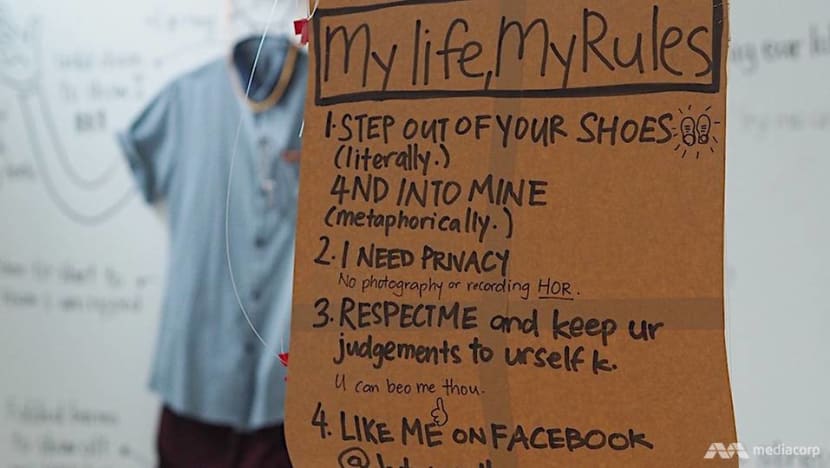
HOW EFFECTIVE IS ART?
But it is a challenge sustaining these changes in youths’ lives — and getting people to see value in their work so they can continue to get funding.
Teng wants people to realise the importance of incremental shifts in behaviour and that a successful shift is not always a black-and-white situation. Take, for example, someone who used to commit gang-related offences but now reoffends only to get money for his mother’s medication.
But she concedes that there will be people who “need hard evidence” on what is being done and “why they should give us money to sing on a stage or go on the streets to talk to these people”.
This is where a tangible culmination of the art interventions in YouthReach can change misconceptions about these youths.
In 2018, for instance, Teng organised a project titled Museum of Unlovables, which showcased art installations by youths. Held at the YouthReach centre, one of these installations included a video with youths on the streets expressing their hopes and dreams.

She recollects a visitor telling her, “I always thought youths at risk want very different things. They just want to play, lepak, join gangs and do drugs. Through the video, I was very moved by the reality that they want the same things as everyone else. We forget that.”
After visiting an installation that functioned like a soundscape with audio recordings of youths verbalising some of the harshest things people said to them, another member of the public told Teng it reminded him of his relationship with his father.
“It made him think about how he might be accidentally passing on (habits) to his own children,” she recalls.
“He said, when you’re a child and you receive all that, you feel a certain way. But when you become a parent, you get lost. You start thinking, it’s for the sake of my child. But you forget the impact it had on you.”
The most effective way to get people to see the effect art can have, she says, is when they experience a shift in their perspective on these youths on the streets.
“No matter how many grants or reports I write or how many great photos I post, nothing can be as impactful as your own experience,” she adds.
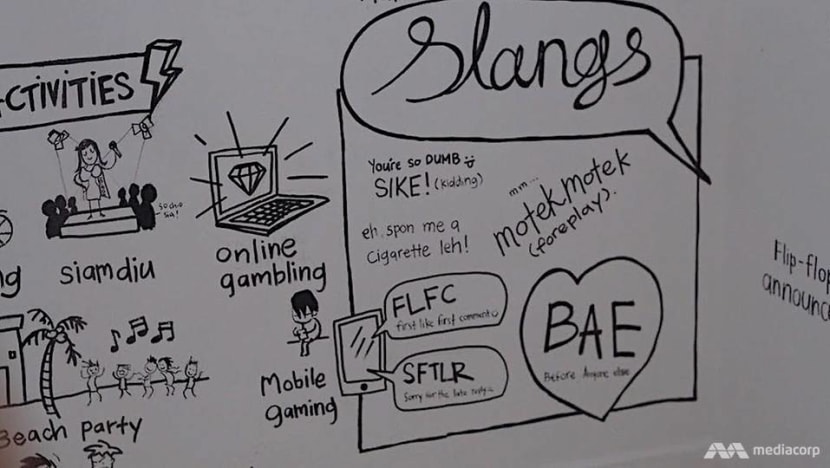
REJECTION IS COMMON
Putting together a showcase or getting funding, however, is probably less difficult than retaining youths so they do not slip through the cracks again.
Even after good rapport is established, youth are not obliged to stay in touch with Teng or Jai. No matter how caring they are, YouthReach is only a thread in the tapestry of their lives.
“Sometimes when you work with certain youths, you think you’ve got to a certain place, but then an (external) uncontrollable event happens, and it unravels everything. Then they become uncontactable,” explains Teng.
Other times, she senses youths on the streets are not comfortable telling her things with their friends around, so she schedules an appointment with them for another day, but they do not show up.
The “pang seh rate” is “very high”. She estimates that “about 70% of (her) time is spent waiting at McDonald’s”, only to get stood up.
“Youths are very truthful (when they don’t want to meet you). They blue-tick your messages. Or they’d leave you on ‘seen’ when you reply to their Instagram stories,” she says.
To avoid burnout, she goes for clinical supervision with her clinical supervisor once a month, which is “like therapy but work-related”.
“It helps us unpack, for example, why a particular youth triggers you so much. Then you realise, oh, it’s because he reminds me of my brother. And then you unpack that,” she says.
Then, armed with newfound clarity, in addition to role-playing skills and art materials, Teng and Jai crawl through the streets again to listen and learn. If they are lucky, they get to help too.
